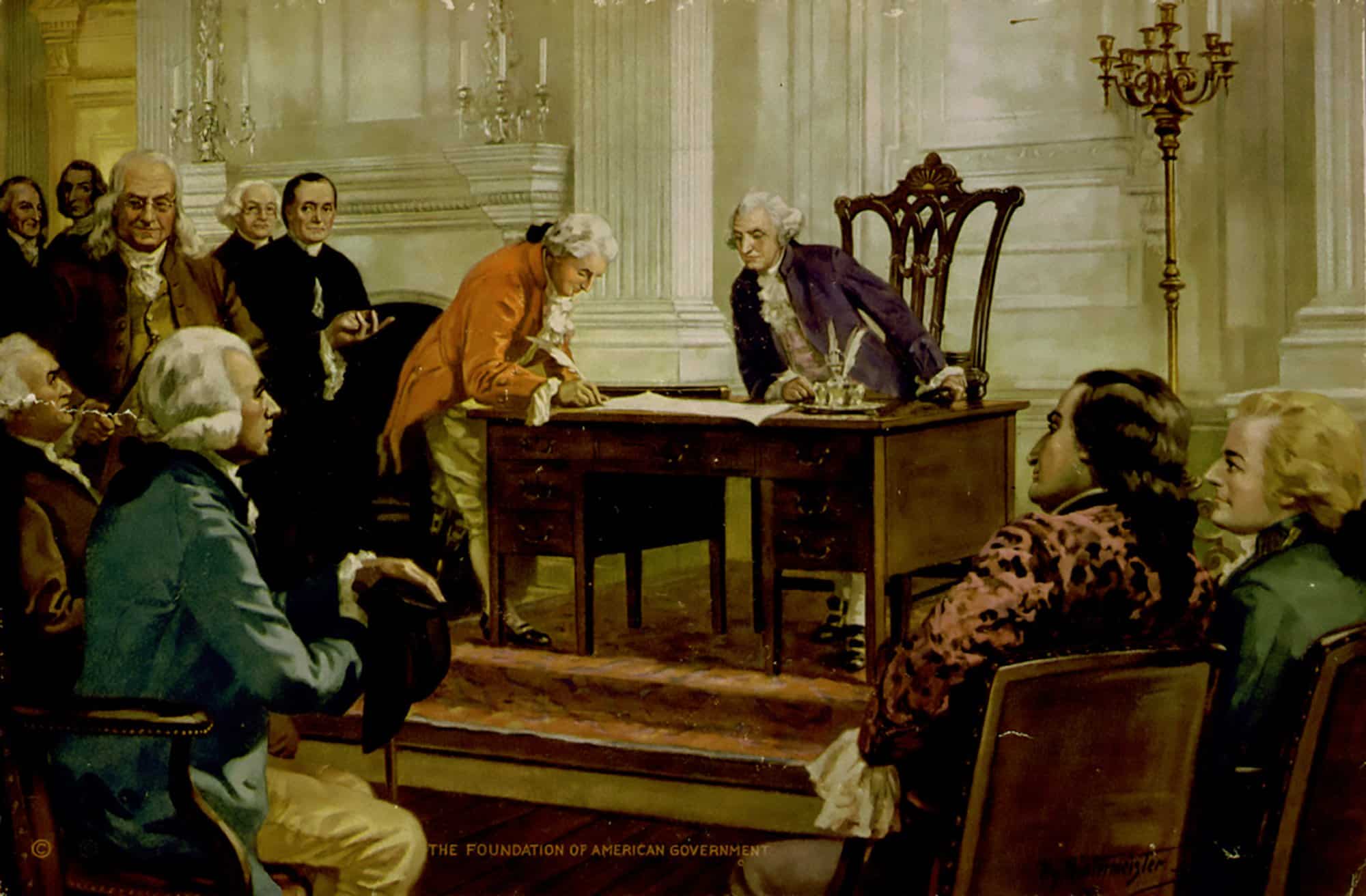A vigorous exercise of speech and press that the British considered to be treasonous preceded the American Revolution. Even before the revolt, American air seemed freer than that in England, which was as free as that of any nation. Almost uniformly Protestant, the American colonies nonetheless contained an increasing number of religious sects; settler communities that needed labor welcomed them. In part because colonists desired to be able to read Scripture for themselves, literacy rates were relatively high. Newspapers multiplied, and pamphleteers flourished. Thomas Jefferson declared in the Declaration of Independence that all men are equally entitled to the rights of “life, liberty, and the pursuit of happiness.” In that spirit, a number of the newly independent colonies issued declarations of rights to enshrine freedoms that are today embodied in the First Amendment.
In retrospect, it is intriguing that the delegates who gathered in Philadelphia at the Constitutional Convention of 1787 and built such a wise form of government in so many other ways did not insist on a similar national bill of rights. Convention delegates apparently viewed George Mason’s belated proposal for a bill of rights as yet another motion to vote down in order to get on with the real work of formulating a more effective government to replace the Articles of Confederation.
Although they did not include a bill of rights, the framers did create a secular national government with multiple checks and balances designed to protect liberties by dividing power between three branches of government and impeding the capacity of the majority to tyrannize the rights of minorities. As some would later argue, in this respect the entire document was a bill of rights, although it largely excluded slaves and Native Americans from its protections and did not alter the inferior status of women.
It was only when delegates reported the Constitution to the states for ratification that they began to comprehend the significance of omitting a bill of rights, as the absence of one began to make ratification look problematic. Anti-Federalist opponents of the new constitution threatened to call another convention to rectify the omission. Federalist supporters initially argued that a national bill of rights was unnecessary, but if (as they claimed) the new government had no intention of abridging individual rights, what real harm could come from including one?
The most prominent discussion of the subject is the correspondence between Thomas Jefferson, then serving as an ambassador to France, and James Madison, now recognized as the “father” of the Constitution and of the Bill of Rights.
Although Jefferson was generally favorable toward the proposed Constitution, he considered the absence of a bill of rights a major flaw. Jefferson argued that a bill of rights would enable independent courts of justice to protect individual rights; he further asserted that statements of rights would serve to educate citizens in republican principles.
Madison served as the most vigorous champion of the bill of rights in the First Congress, persuaded by concerns of voters whose support he needed for election to the House of Representatives and by hopes of support that he thought the promise of a bill of rights would give to the new government,
In introducing these guarantees to his fellow members of Congress in June 1789, Madison referred to them as the “great rights of mankind.” The requisite majority of states ratified the Bill of Rights in 1791.
NEXT: Placement, Wording, and Application of the First Amendment
John R. Vile, David L. Hudson and David Schultz are the editors of the two-volume Encyclopedia of the First Amendment, which was published in 2009 and the basis of the online encyclopedia. This was part of an introduction essay to the book.

